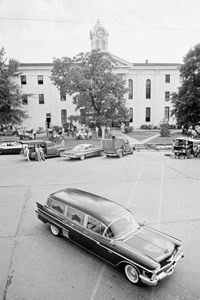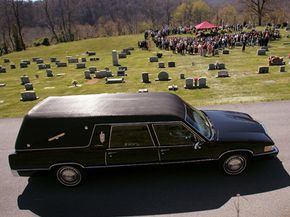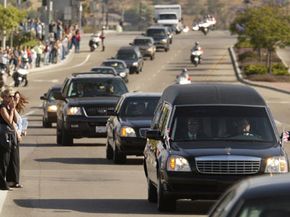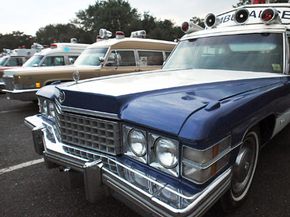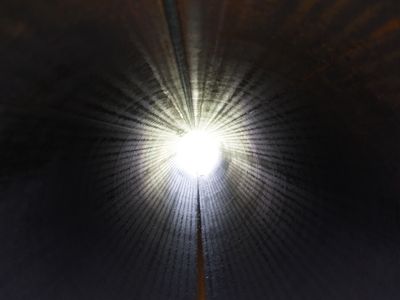Advertisement
Most of us learned that song when we were kids. Its origins seem to be lost to history and (if Google can be trusted), there are dozens of versions of the lyrics, but they all seem to begin with a line about a hearse. In Western culture, hearses are among the most readily identifiable symbols of death. A hearse is the car you're going to take your last ride in, and sadly, for a lot us, it may be one of the very few rides we'll ever take in a limo-like vehicle. Is it any wonder that hearses have become an object of fascination? People collect them, drive around town in them, take them to classic car shows and enjoy telling scary stories about them, too. There are even ghost stories about hearses and a few regional legends in which they're prominently featured.
Yet most of us know very little about them. How are hearses made? (Here's a hint: It involves sawing a perfectly good car in two.) How long have hearses been around? (Modern motorized hearses came into existence about a century ago.) What kind of cars are they typically made from? (Cadillac and Lincoln are among the most popular hearse donor vehicles.) How much do they cost? (Let's just say, if you have to ask, you probably can't afford one.)
In the rest of this article, which really should be called, "Everything You Ever Wanted to Know about Hearses but Were Afraid to Ask," we'll look at hearses in greater detail. We'll learn their history, walk through the manufacturing process and tell a spooky story or two along the way.
So what are you waiting for? Turn the page and find out more. You're not scared, are you?
Advertisement
